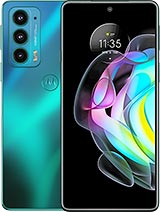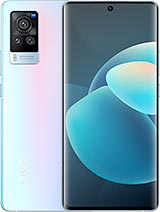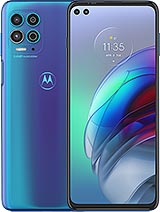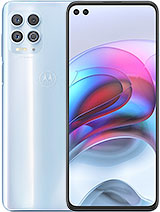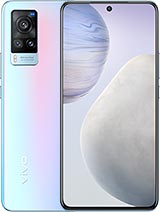Moto Edge S vs X60 Pro+ /ROG 3 /Mi 10 Ultra /Reno5 Pro /Mate40 Pro /iPhone 12 Pro Max Benchmark Test By TechNick
Seven different smartphones, seven different, chipsets, three different benchmarks: this is tech neck, and this is a benchmark, comparison and stress test between seven, very different smartphones in which we will compare scores frames per second heat management throttling and battery drain. All devices have been updated to their latest available software. All devices here are kitted with LP ddr5 ram, except for the Oppo and iPhone which are both stuck on LP ddr4x. We have a 160 hertz, refresh rate on the ROG phone 3 120 hertz on the VIVO and Xiaomi 90 hertz on the Motorola Oppo and Huawei, and we're still stuck to 60hz on the iPhone. The only android device here that can go past. Full HD plus is the Huawei, but we're going to bring it down to full HD plus, which is the standard resolution to match the other android devices and the iPhone is stuck somewhere between HD and full HD, which unfortunately cannot be changed.
I have enabled all forms of high performance, slash game modes on all devices here, except for the Motorola and iPhone, which are unfortunately lacking. These features our first benchmark here is an tutu, and we're going to be running version 8.5.4 on the android devices, while the latest version for iOS is 8.3.8, the second benchmark we'll be going through is geek bench version 5.3.2 and the third one will be a 3d mark wildlife. The ROG phone says it's the strip edition on 3dmark, but I can assure you this is the fully fledged ROG phone, the 3, with a max clock, speed of 3.1 gigahertz running the snapdragon 865 plus chipset. Can the new snapdragon 870 powered Motorola AJS surpass the snapdragon 865 devices and, more importantly, can it keep up with the 5 nanometer process, node monsters, the snapdragon 88, Kira, 9000 and a14 bionic we'll have to wait and see this is technique and without further ado, let's go we're going to kick-start things off here measuring the time at 20 past three in the afternoon with the battery percentages. We'll then compare this at the end of the test, based on the duration of time, how much percentage has passed on all devices? How much they've drained as well as their William hour per minute? We're going to do something similar when it comes to device temperature.
However, this time we're going to be clocking the temperature after every interval- I guess you could say after each and every individual benchmark, starting with n22, then going through to geek bench and then last but not least, a 3d mark wildlife and tutu is all about testing out performance in terms of graphics, as well as raw processing power. We're talking about GPU and CPU performance here well with geek bench. It just focuses on CPU the test that we're going to be doing today and 3dmark wildlife is all about GPU and frames per second starting with an tutu. Here, none of them had any issues when running the first part of an tutu going into the second part once again, no issues here. The third part is the term coated soldiers and, like I've, said many times before.
This is the most strenuous part of the test, and I know that many of you guys are thinking it already, and you always comment on my videos saying guys. You know the iPhone cannot be compared here when running an tutu, since an tutu themselves have stated that they are not cross-compatible. This is not a cross-compatible benchmark. You cannot compare iOS to android when it comes to rendering, due to using different APIs, that being the metal API on iOS devices, as opposed to Vulcan and OpenGL and OpenCL on android devices. But it would be a shame to leave the iPhone out of here, and I just want to show you guys that the iPhone is still stacking up, pretty great when rocking an tutu and how much better it actually does when running other benchmarks such as geek bench and 3dmark, we'll get to those later.
But as of right now, once again, no issues whatsoever here when running the third part of an tutu, the terracotta soldiers, all nice and flawless here, and now we're going to jump into the temperatures after we've hit and two. So after that and two bits, we have the hottest phone being the VIVO x60 pro plus it also added the most in degrees Celsius and the coolest adding the least is the iPhone 12 Pro max. Of course, after an tutu moving on to geek bench version 5.3.2, now in my previous test, I usually do 5.2.5, but it's been upgraded. Finally, it doesn't really necessarily mean that's good for the devices it's a little tougher to handle once again the coolest device being the iPhone, but the VIVO actually dropped by 0.1 degrees in Celsius, while the Oppo was the hottest adding 2.2 degrees in Celsius and the hottest overall is, of course, still the opp. Well now the opp, with 54.5 degrees in Celsius, which is pretty hot, I mean the Vito, was pretty close to that off down tutu running through 3dmark wildlife of here. This is not the stress test.
This is just a one minute, quick portion, video, and it looks perfect on all devices. We're hitting some pretty solid frames on the snapdragon 888 we're hitting a good 30, odd frames per second on the yesteryear, snapdragon 865, 865, plus and 870 devices we're hitting just over 20. I guess you could say maybe 24, maybe just shy of 30. Getting to the last temperature heat dissipation management over here we have 54.5 degrees in Celsius on the Vito, adding 1.7 there. The least edition is the me10 ultra and the coolest device, the iPhone 12 Pro max and from start to finish, the Motorola AJS added a whopping 15 degrees in Celsius and the least edition was 8.6 degrees in Celsius on the iPhone. Now, if we focus on the percentage of drain, as well as the battery capacity of each device, we can then work out the 19 minutes that we took to run the test to get a William hour per minute reading.
Those are the scores that you see at the bottom, with the most efficient, the best score being the lowest, which is the iPhone 12 Pro max doing an incredible 15.5 William hour per minute reading, which is really great after running three benchmarks and the worst being the Huawei Mate 40 pro getting a whopping 20.8 William hour per minute drain and the second worst being the Oppo first benchmark score here. The Motorola edge is rocking a snapdragon 870 chipsets, getting just over 650 000 points, then third, which is actually the 10 ultra running a vanilla, snapdragon 865. Now the big boys come out the Huawei Mate 40 pro with 684 000 points and the almighty snapdragon 888 powered VIVO x60 pro plus 730 000 points is definitely nice to see. Geek bench measuring single core first place is the iPhone no surprise here with over a thousand five hundred points. Second place.
Quite a jump down is the VIVO with a thousand one hundred and thirty-five points, then we go to third being the Huawei still in a pretty similar range compared to the Vito, since the top three devices are all rocking five nanometer process, no tech jumping down to a seven nanometer chip going to 994 points on the ROG phone. Three, the ROG actually beat the 870, which plays fifth with 981 points. Then it goes to sixth being the opp, with a lackluster dimension 1000 plus chip, also on seven nanometer tech beating the seven nanometer plus monster me 10, ultra, which placed seventh due to throttling, which got a mere 596 points. Things are slightly different when we get to the multi-core score, we still have first place being the iPhone second place, being the VIVO third place being the Huawei once again, all five nanometer process, no chips taking the top three tiers over there, but now. Fourth, once again, the origin phone three with fifth, once again, being the edge s and sixth, this time being the Xiaomi out doing the Oppo RINO 5 pro, even though the Xiaomi had a pretty bad score here, and it was throttling, it still came out on top with multi-core performance compared to MediaTek's dimension, 1000 plus powered Reno 5 pro and testing out the graphics part of things with 3dmark wildlife first place once more.
The iPhone 12 Pro max with pretty close to 8 000 points second place. This time is no longer the Vito, but the Huawei with over 6 000 points. Quite a big jump down to third place. This time round is the VIVO with just shy of 6 000 points. Fourth place is now the Motorola HS, edging out the ROG phone 3, with a substantial lead.
Sixth place is the Oppo Reno 5 pro with the worst chipset than the ne10 ultra and still beating it here, but you've got to bear in mind that the mi 10 ultra was once again throttling, which seems to be a common occurrence for Xiaomi devices. Now, if we focus on frames per second, we got the highest fps on the iPhone 12 Pro max with 46 fps. Then we had 37.9 on the Huawei 34.6 on the Vito. What was fascinating is that we got 29.5 on the snapdragon 870 powered Motorola device compared to the snapdragon 865 plus powered ROG phone 3, with five frames per second less than that and a frame per second one and a half frames per second less than that is the 10 ultra with 23.1 fps, meaning that the Oppo Reno 5 pro is sitting somewhere between the snapdragon, 865 and 865, plus in terms of graphics, rendering. I hope that you enjoyed watching this video as much as I did.
Making it a sub to the channel would be tremendous. This is tenet, and I'll, see you in the next one. You.
Source : TechNick


